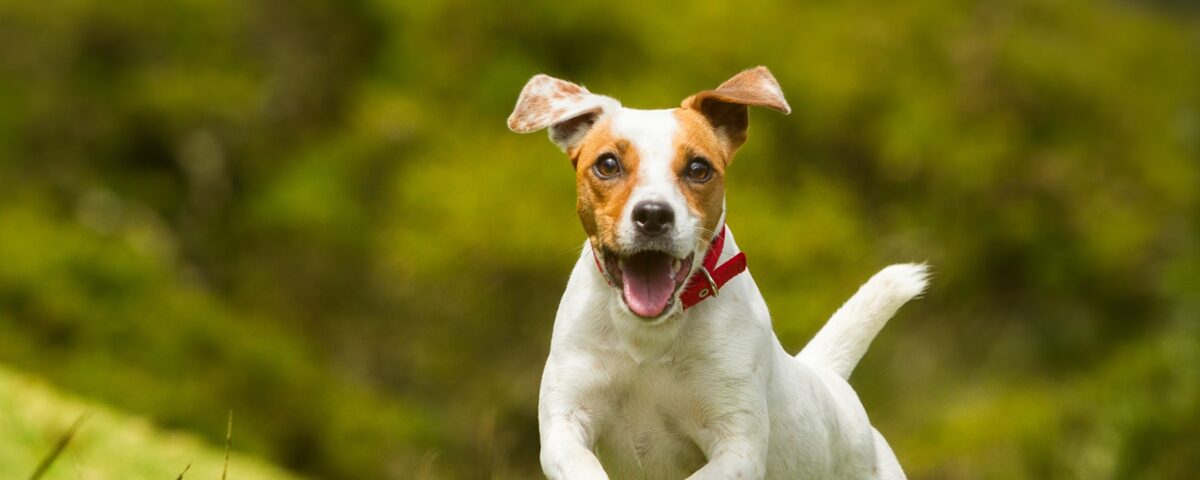
Fleas and your Dog
Posted: 06/23/2022 | Categories: Parasites with your dog
Summer is a wonderful time to be a dog owner. But with the hotter weather comes a challenge: fleas.
If picked up, the small brown insects can make your dog very uncomfortable and sometimes even downright miserable. The good news is that fleas can be prevented and treated if you take care and follow some simple guidelines.
How does my dog get fleas?
The most common flea found on dogs is the dog flea, or Ctenocephalides canis, but cat fleas, human fleas and occasionally the sticktight flea will settle for a dog if they can’t find their preferred mammal to munch on.
The most common routes by which fleas could find their way onto your dog are:
- Other dogs: Unlike cats, who are territorial and like to keep themselves to themselves when it comes to their own species, dogs are highly sociable creatures. Sniffing around and playing with other dogs is a common way for your pet to pick up the pests. With the insects’ impressive ability to jump, it’s easy for them to leap from one dog to another and start a new colony.
- Public facilities: Just as children often get ill after visiting indoor play areas, dog grooming facilities and public kennels can be a hotbed of flea infestation. Always ask these facilities about their flea control policies before using them.
- Vegetation: Dogs love to be outside. Whether it’s just in the backyard, running around at the park or going wild in the woods, contact with grass and bushes can lead to fleas ‘rubbing off’ onto your dog’s fur.
What are the symptoms for fleas?
Keep an eye on your dog’s behaviour. Fleas bites can vary from mildly irritating to very painful, so if your dog seems restless and is frequently scratching, licking or chewing their fur, then they may have picked up fleas. If you inspect your dog’s fur close to the skin (a flea comb can help) you may be able to see them. They tend to congregate around the armpits and groin, base of the tail and around the ears – areas where it is most difficult for the dog to dislodge them and it is warm and moist.
How to treat dog fleas
Fleas reproduce quickly, so if your dog has fleas, it’s important to quickly get rid, and keep rid.
Your dog loves water, so take advantage of that fact and give them regular baths. Washing your dog in warm water and dog shampoo is the perfect opportunity to go through your pet’s hair with a fine-toothed flea comb, combing carefully starting close to the skin, and remove any fleas that might be lurking.
There is also a range of specially-designed treatments on the market which can be highly effective in eliminating fleas on dogs. These range from exterminating spot-on treatments and flea sprays, to more preventative options such as flea collars that contain repellent scents. But always check with your veterinarian to find out what’s best for your dog.
How to prevent dog fleas
The golden rule of flea prevention is to protect your pet’s environment as well as your pet. There is little point clearing your dog of fleas if the house or garden are still infested. The good news is there are several easy steps you can take to help minimize the chances of your dog picking up fleas repeatedly:
- Spray your home and yard: As well as spot-on treatments and flea collars for your pet, there are also carpet and upholstery sprays you can use to kill the eggs and larvae that will be in your home. Remember to spray all your carpets and rugs, behind the cushions, down the back of the couch and along the edges of your fitted carpets as fleas will hide in dark spaces. To be completely effective you need to repeat the treatment 3 or 4 weeks after the first treatment.
- Clean your home regularly: If you have found fleas in the home, thoroughly vacuum-clean all carpets, rugs and soft furnishings and throw away the dust bag once you finish to make sure every trace is gone. Sweep or vacuum and mop hard floors, and remember to clean under furniture too. Remember, fleas breed quickly, so even a small infestation left untreated could undo all your hard work.
- Wash your dog’s bedding: Fleas love to be where your dog is, so wash all your dog’s bedding and their toys in hot water to kill any eggs, larvae and adult fleas that might be lurking there.
- Invest in some flea traps: If fleas occur frequently, consider leaving some flea traps around the home. You can purchase little sticky pads which attract the bugs so they become stuck and eventually die, or a bowl of hot soapy water placed under a bright light overnight can also act as an effective flea trap. But remember, traps can help to eliminate the adult population, but won’t tackle the larvae and eggs in your home, so it’s still important to clean.
- Keep the yard tidy: Most of us don’t associate gardening with pest control, but the backyard of your home is an ideal breeding ground for fleas. Use a yard spray to clear your outside space of fleas so you don’t carry them back into the house on your shoes and your dog doesn’t get re-infested.